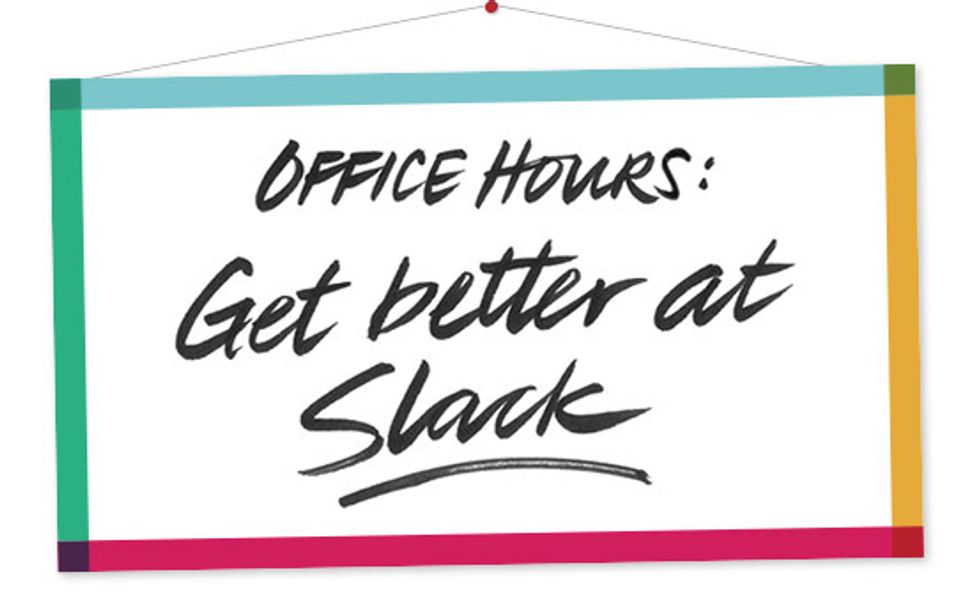Below is an article originally written by Matt Haughey at PowerToFly Partner Slack, and published on November 15, 2018. Go to Slack's page on PowerToFly to see their open positions and learn more.
Remote work is increasingly going from a luxury to a workplace norm: 43% of employed Americans said they spent at least some time working remotely in 2016, while 70% of the global workforce is now doing so once a week. Then there are distributed teams. As growing firms open new offices, you might be working with people in Lagos, New York City, or Shanghai, as well as across town.
Today, many of these far-flung colleagues are working together in Slack. With a few extra considerations, however, remote teammates can not only collaborate, but shorten the distance between them too.
The importance of trust and visibility
After talking to dozens of people in different industries about how they use Slack across distances, the topic of trust came up early and often in our conversations. Working with remote or distributed colleagues requires trust and creative thinking from all parties.
In the previous century, managers could track how many hours their employees sat at an office desk near them. Today, those metrics could be replaced by lines of code written, number of help tickets resolved, or number of pieces produced, but it's important to figure out ways to accurately and fairly measure the effectiveness of employees, regardless of their location.
For this reason, visibility is a key aspect Slack can provide to distributed teams. A well-organized, transparent Slack team with channels arranged by topic and projects makes it easier to see everyone's output, even those far from headquarters. When remote workers post as often to Slack as their onsite counterparts, chances are they're being just as productive.
Slack integrations can also help promote visibility among your remote and distributed employees:
- Programming tools like Github and Jira let engineering managers see the output of all their developers, wherever they may be.
- File and document apps like Google Drive and Dropbox let marketing teams keep tabs on everyone's work.
- For those in customer support, tools like Zendesk and Intercom can report into relevant Slack channels, letting managers see how well their help center team is faring around the globe.
Meanwhile, things like daily stand-up meetings can give every member of a team visibility and take place entirely in Slack.
Shortening distances with video
Every remote and distributed worker we interviewed relies heavily on video conferencing to maintain face-to-face connections with their team. Slack comes with its own built-in audio and video features. If your team prefers other tools, there are apps available from popular services like Zoom, Google Hangouts, and BlueJeans that also make it easy to start a video conference from Slack whenever you need one.
Screen-sharing is another aspect of Slack's own video conferencing feature worth noting. You can share your screen with others on a video call and allow them to either draw on your screen or enable a cooperative mode in which other people on a call can move their mouse around and interact with your shared screen. This feature is key for things like pair programming, when two people in different locations collaborate inside a single screen, writing software code together interactively.
Help your team connect
User profiles can help employees get to know one another, and once customized for your team, you can share location, languages spoken, current time zone, and direct reports below and managers above, as well as topics of expertise and other relevant personal details.
All this information is handy when you're doing cross-functional work with people you don't interact with daily, but it's especially the case for those working from afar. It helps them figure out the best time to schedule meetings and with whom, and even learn how to pronounce names correctly before the next company-wide event.
For distributed teams, time zones can be both an advantage and a challenge. In Slack, you may want to denote which channels are shared across distributed teams and set expectations that conversations are asynchronous—answers to questions may take longer to appear as offices come online at different times of day. Stating it clearly in the channel topic and purpose fields is a great way to communicate channel rules to your team. Some teams find that having offices post end-of-day summaries helps distributed teams catch up on activity as they get started each morning.
Teams may also want to set expectations around offline discussions that others might have missed—say, a discussion summarized and posted in a team channel after a few members had an epiphany over lunch, or ideas arising from hallway conversations posted into relevant channels. Both are great ways to create a culture of transparency and sharing that's more inclusive for everyone on the team.
Set expectations around offline discussions that others might have missed.
It's important that we not forget the power of a direct message over long distances. For each time you might think, I should pop by my coworker's desk and ask him about this when you're the same office, you can easily send a DM with your question instead if he happens to be far away. For managers and their direct reports, a DM also provides a quick method of private communication without the formality or structure of email.
Helping remote teammates helps all teammates
Optimizing Slack for workers near and far certainly helps those who work in different locations, but it can benefit everyone. Using Slack in this way means that parents with a sick child can work from home smoothly. If a manager needs time to recuperate after a broken ankle, she can stay home but continue to easily keep tabs on her team. If someone in your workforce has a disability that prevents him from being in an office space, Slack can offer a way to keep him productive and connected to everyone.
A culture of openness, transparency, and public discussions taking place in Slack is going to result in a good team culture at any company, but it's also a key to remote and distributed workers feeling like equal members of your team.







